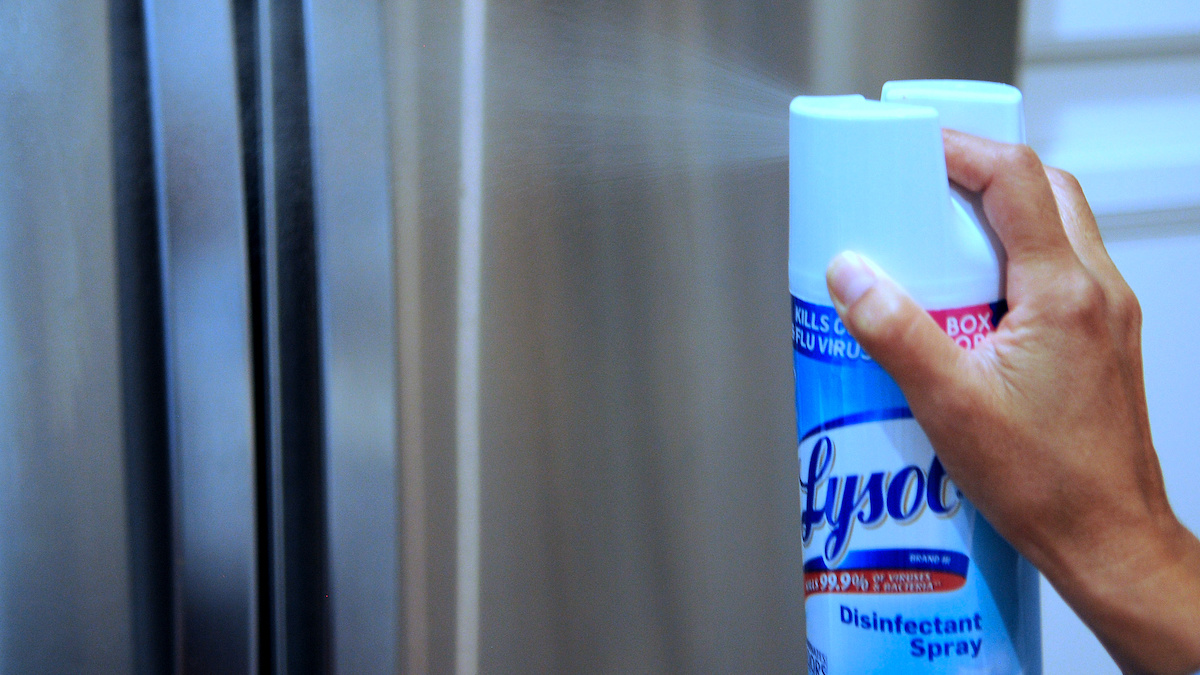
EPA Approves Two Lysol Products to Kill Coronavirus on Surfaces

The U.S. Environmental Protection Agency has approved two Lysol products as the first to effectively kill the novel coronavirus on surfaces, based on laboratory testing. Paul Hennessy / NurPhoto via Getty Images
The U.S. Environmental Protection Agency (EPA) recently issued a list of 431 products that are effective at killing viruses when they are on surfaces. Now, a good year for Lysol manufacturer Reckitt Benckiser just got better when the EPA said that two Lysol products are among the products that can kill the novel coronavirus that causes COVID-19.
The two products are Lysol Disinfectant Spray and Lysol Disinfectant Max Cover Mist. In a press release, the agency said that the two products were both successful in laboratory testing at preventing the spread of the virus.
While there are 431 products on the EPA’s list of disinfectants that are strong enough to stave off “harder-to-kill” viruses than the novel coronavirus, the two Lysol products are the first to be tested directly against the virus behind the global pandemic and be proven effective, as CNN reported.
While the EPA plans to test more products against the coronavirus specifically, it has so far only approved the two Lysol products as effective at removing the virus from surfaces.
That doesn’t mean you just spray the disinfectant, wipe it away, and the virus is gone. The tests showed it was effective after two minutes, which means spraying it, leaving it, and then vigorously scrubbing are important steps to ensuring the sprays remove the coronavirus.
Reckitt Benckiser has already seen its profits rise more than 13 percent in the first half of the year as individuals and businesses have prioritized sanitizing surfaces, as Forbes reported. The company also made headlines in April when it had to disavow President Trump‘s claim that a disinfectant inside the body could knock out the virus in one minute.
“We must be clear that under no circumstance should our disinfectant products be administered into the human body (through injection, ingestion or any other route),” the company said in statement at the time, as Forbes reported.
Now, the company has the distinct advantage of being allowed to advertise on its label that it can kill the novel coronavirus, which is technically named SARS-CoV-2. Before any product can legally advertise that it can kill a particular pathogen, the claim must be authorized by the EPA, according to The New York Daily News.
“In the face of the pandemic, Lysol continues to work with a wide range of scientific and health experts to educate the public on the importance of hygiene,” said Rahul Kadyan, executive vice president of Reckitt Benckiser in North America, as CNN reported.
“Hygiene is both the foundation of health and essential in preventing the spread of illness causing germs,” said Kadyan in a statement. “The EPA’s approval recognizes that using Lysol Disinfectant Spray can help to prevent the spread of COVID-19 on hard, non-porous surfaces.”
According to the press release, Lysol is currently testing other products to measure their efficacy against the coronavirus.
Other common products on the EPA’s disinfectant list include the Scrubbing Bubbles Multi-Purpose Disinfectant, Clorox Bleach Blanqueador and Arm & Hammer Essentials Disinfecting Wipes, though none of them have been tested against the novel coronavirus, as the Today Show reported.
Along with wiping down surfaces, the CDC continues to ask the public to practice social distancing, wear protective face coverings in public, and wash hands thoroughly and often in order to effectively prevent the spread of COVID-19, as ABC News reported.
- Here's How to Clean Your Groceries During the COVID-19 Outbreak ...
- EPA Warns Against Fake Coronavirus Cleaners - EcoWatch

 233k
233k  41k
41k  Subscribe
Subscribe 